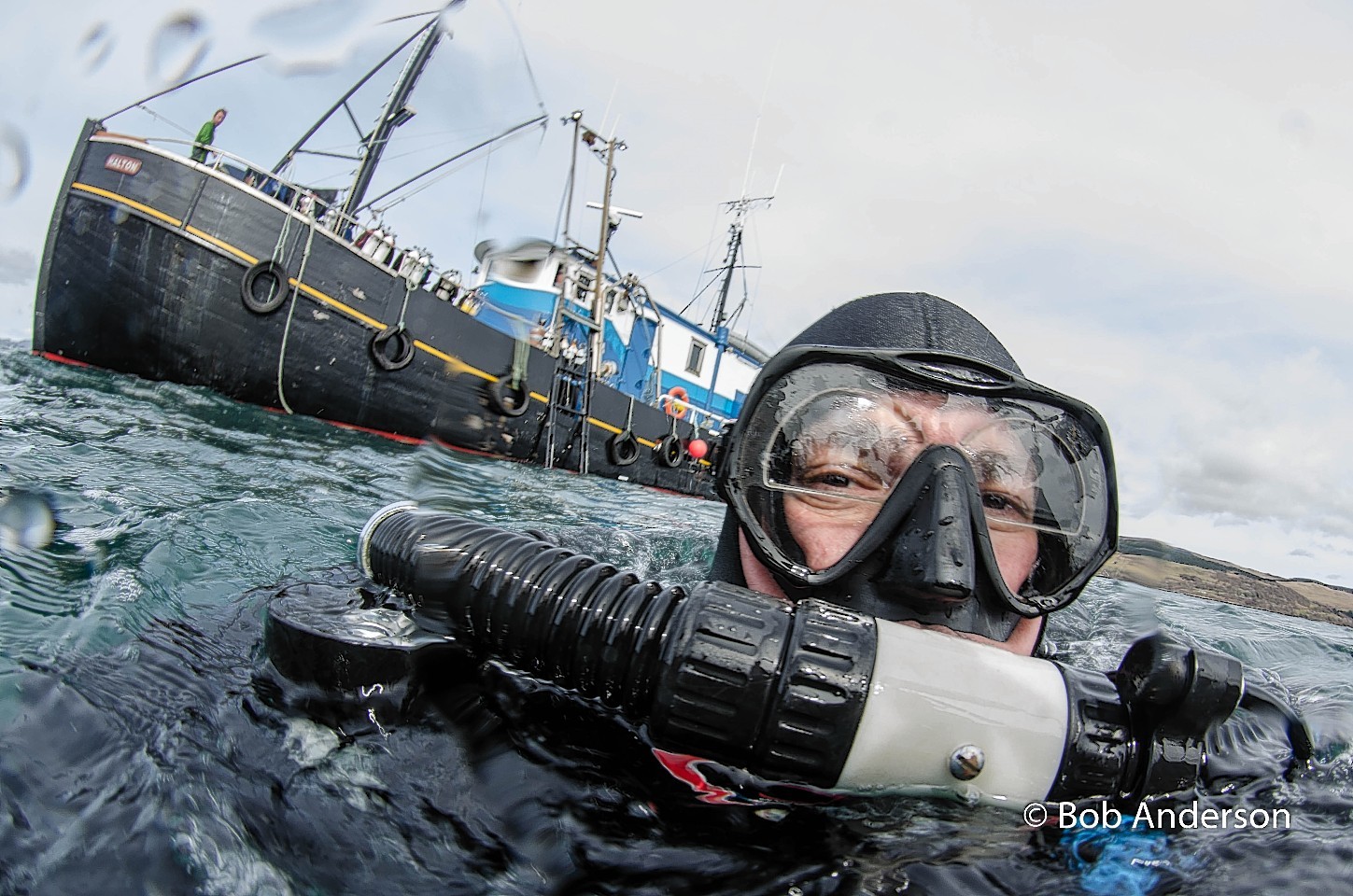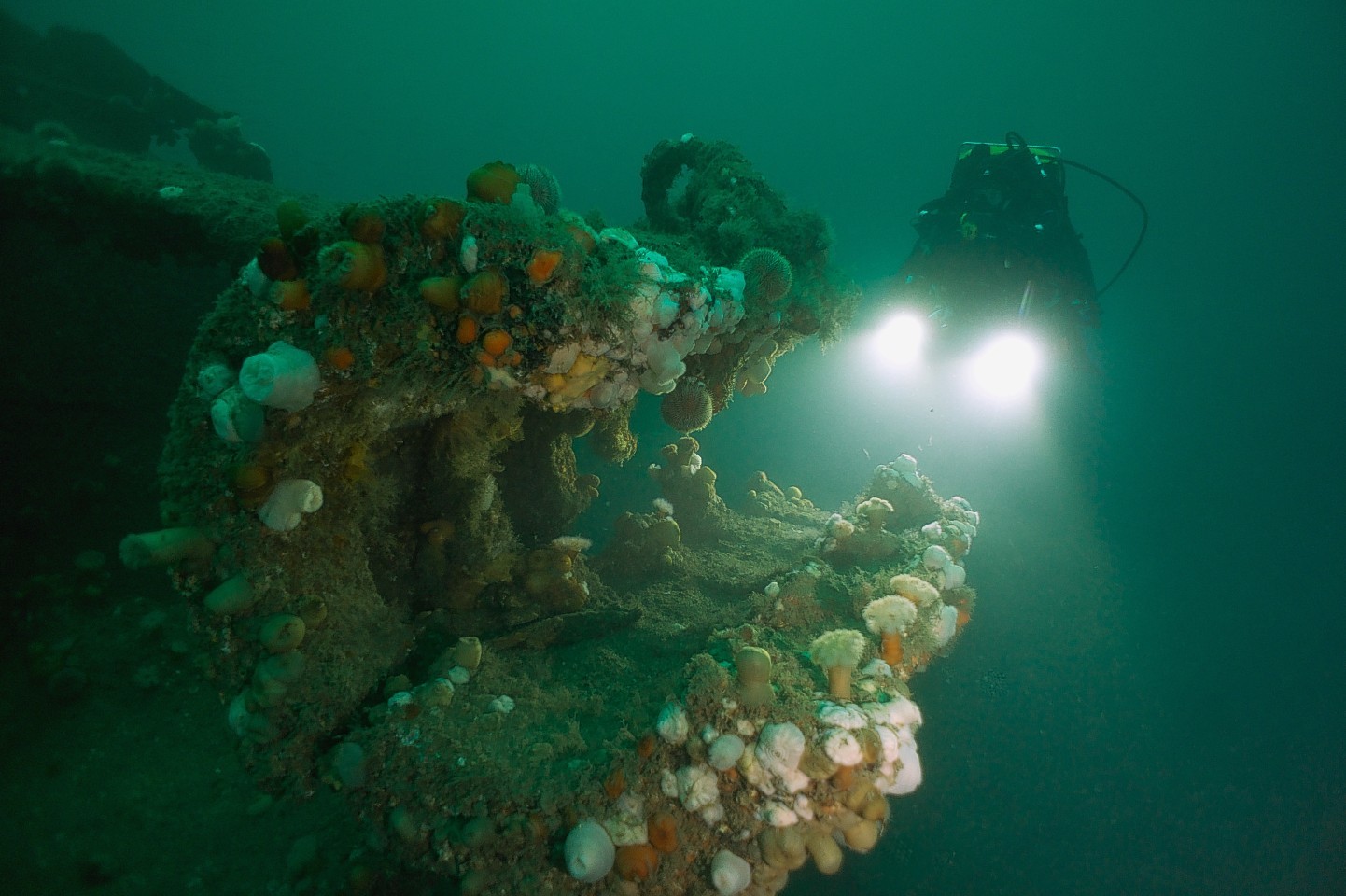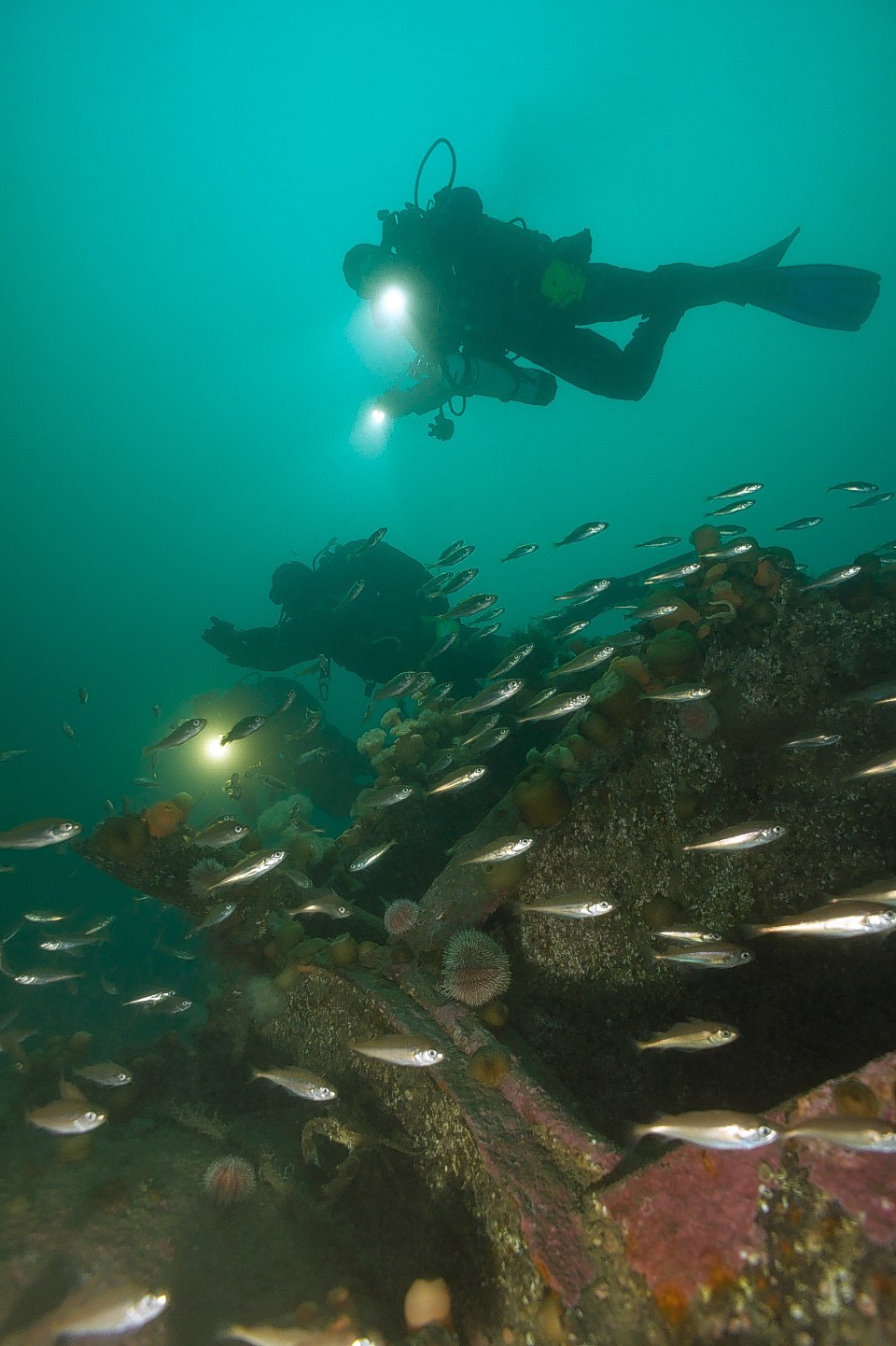Underwater photographs and sketches by scuba divers are being employed to create a unique series of interactive maps.
They will help protect one of Scotland’s most iconic shipwreck sites at Scapa Flow.
Scuba diving artist, Steve Jakeway, has teamed up with fellow British Sub-Aqua Club (BSAC) divers for the groundbreaking project, to map seven First World War shipwrecks.

The wrecks of the SMS Cöln, SMS Kronprinz Wilhelm, SMS Brummer, SMS Karlsruhe, SMS König, SMS Markgraf and SMS Dresden all still lie where they sank off the coast of Orkney, almost 100 years ago, on June 21, 1919.
The three battleships and four light cruisers were among 74 ships deliberately scuttled by their commander who mistakenly believed the British were about to seize the German High Seas Fleet. It was the greatest loss of shipping ever recorded in a single day during the conflict.
All seven wrecks have now been mapped by illustrator Mr Jakeaway, in a project to raise awareness of marine heritage and protect one of the UK’s most popular wreck diving sites.
It follows an expedition with a team of BSAC divers to photograph and sketch the seven wrecks.

The maps, which are being published on the Big Scapa Clean Up project website, will help guide divers to explore the wrecks as they detail the outlines of the ships and other key features, such as guns.
They also highlight potential hazards and litter which divers have spotted such as discarded fishing nets, which cause a phenomenon called “ghost fishing”, when old nets get snagged and continue to kill marine wildlife.

Mr Jakeway said: “The idea was to create a series of simple single-line illustrations showing the layout of each wreck, so divers can easily work out what they are swimming over or under, and recognise key features such as a ship’s gun.
“The divers took it in turns to go down and photograph each of the wrecks. In order to get as accurate a picture as possible, we also got them to make their own sketches, and describe to me exactly what they had seen, including any nets or other debris.
“The sketches from the boat together with the photographs and my notes enabled me to create the final drawings.”
To see the Scapa Flow wreck maps, visit seacleanmachine.org.uk